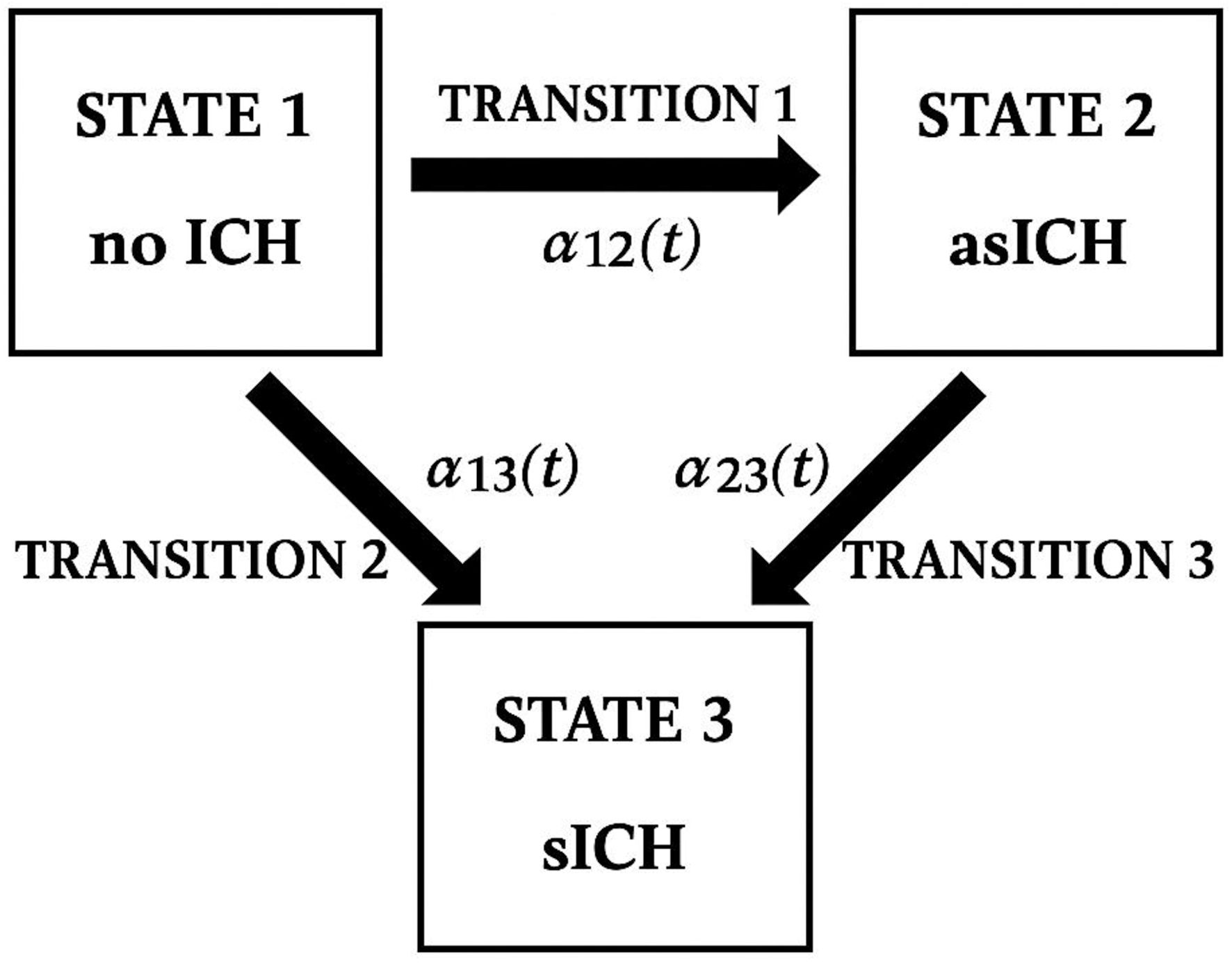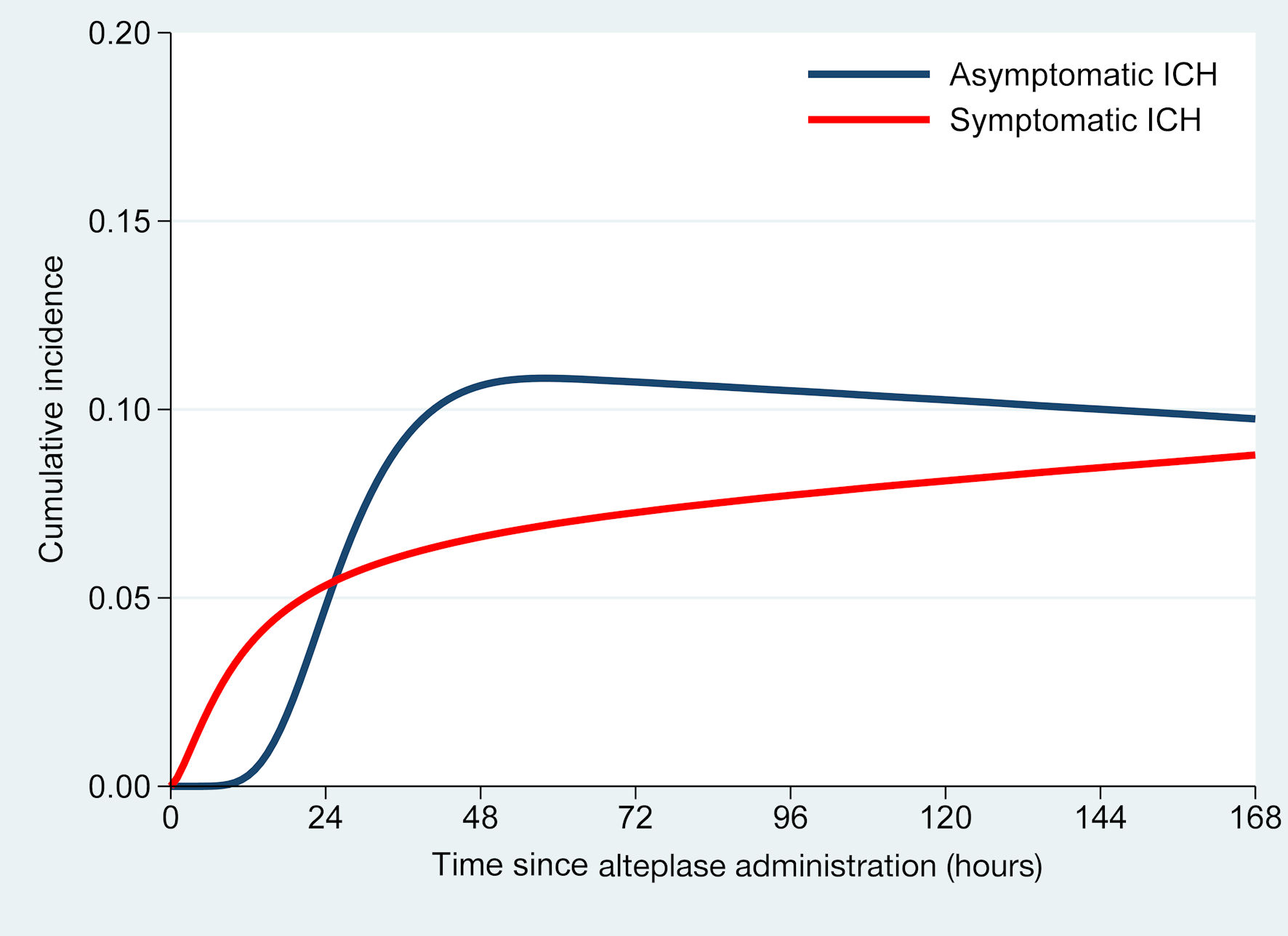
Figure 1. Conceptual illustration of post-alteplase outcomes and transitions adapted from a multi-state (illness-death) model. ICH: intracranial hemorrhage; asICH: asymptomatic intracranial hemorrhage; sICH: symptomatic intracranial hemorrhage.
| Journal of Clinical Medicine Research, ISSN 1918-3003 print, 1918-3011 online, Open Access |
| Article copyright, the authors; Journal compilation copyright, J Clin Med Res and Elmer Press Inc |
| Journal website https://jocmr.elmerjournals.com |
Original Article
Volume 17, Number 10, October 2025, pages 556-564
Optimal Timing of Post-Alteplase Brain Computed Tomography: Routine Twenty-Four-Hour Versus Extended Forty-Eight-Hour for Detecting Asymptomatic Intracranial Hemorrhage
Figures



Tables
| Baseline characteristics | sICH (n = 49) | asICH (n = 51) | no ICH (n = 455) | P value |
|---|---|---|---|---|
| Numbers in each group represent the final transitioned outcomes at the end of the 7-day follow-up. These differ from those in the study flow diagram, which reflect initial outcomes after the first follow-up brain CT scan. sICH: symptomatic intracranial hemorrhage; asICH: asymptomatic intracranial hemorrhage; ICH: intracranial hemorrhage; SD: standard deviation; NIHSS: National Institutes of Health Stroke Scale; IQR: interquartile range; CT: computed tomography. | ||||
| Male, n (%) | 22 (44.9) | 30 (56.6) | 252 (55.6) | 0.225 |
| Age (years), mean ± SD | 69.7 ± 9.9 | 64.4 ± 10.1 | 64.5 ± 12.7 | 0.416 |
| Body weight (kg), mean ± SD | 57.5 ± 12.1 | 60.9 ± 13.9 | 58.3 ± 12.8 | 0.809 |
| Initial NIHSS, median (IQR) | 13 (10, 18) | 12 (8, 17) | 10 (7, 13) | < 0.001 |
| Number of brain CT scans during admission, median (min, max) | 2 (1, 6) | 1 (1, 3) | 1 (1, 4) | < 0.001 |
| Dead during admission, n (%) | ||||
| Neurological cause | 15 (30.6) | 0 (0) | 8 (1.8) | 0.006 |
| Non-neurological cause | 0 (0) | 1 (1.9) | 7 (1.5) | |
| Follow-up brain CT scans and timing of first detection | Asymptomatic ICH (n = 51) |
|---|---|
| Data represent patients whose final transitioned outcome was classified as asymptomatic intracranial hemorrhage (asICH) at the end of the 7-day follow-up. CT: computed tomography; ICH: intracranial hemorrhage; SD: standard deviation. | |
| Number of brain CT scans performed | |
| 1-time CT patients, n (%) | 37 (69.8) |
| 2-time CT patients, n (%) | 11 (20.8) |
| 3-time CT patients, n (%) | 5 (9.4) |
| Time to first detection (h), mean ± SD | 25.7 ± 8.7 |
| First transition to asymptomatic intracranial hemorrhage (asICH) (n = 63a) | |||
|---|---|---|---|
| CT timing scenario 24-h routine | CT timing scenario 48-h extended | P value | |
| aN = 63 represents the first detection of asymptomatic intracranial hemorrhage (asICH), which differs from the final transitioned outcome (n = 51), as 12 patients progressed to symptomatic intracranial hemorrhage (sICH) within 7 days. CT: computed tomography. | |||
| First asICH detection, n (%) - sensitivity | 19 (30.2) | 61 (96.8) | < 0.001 |